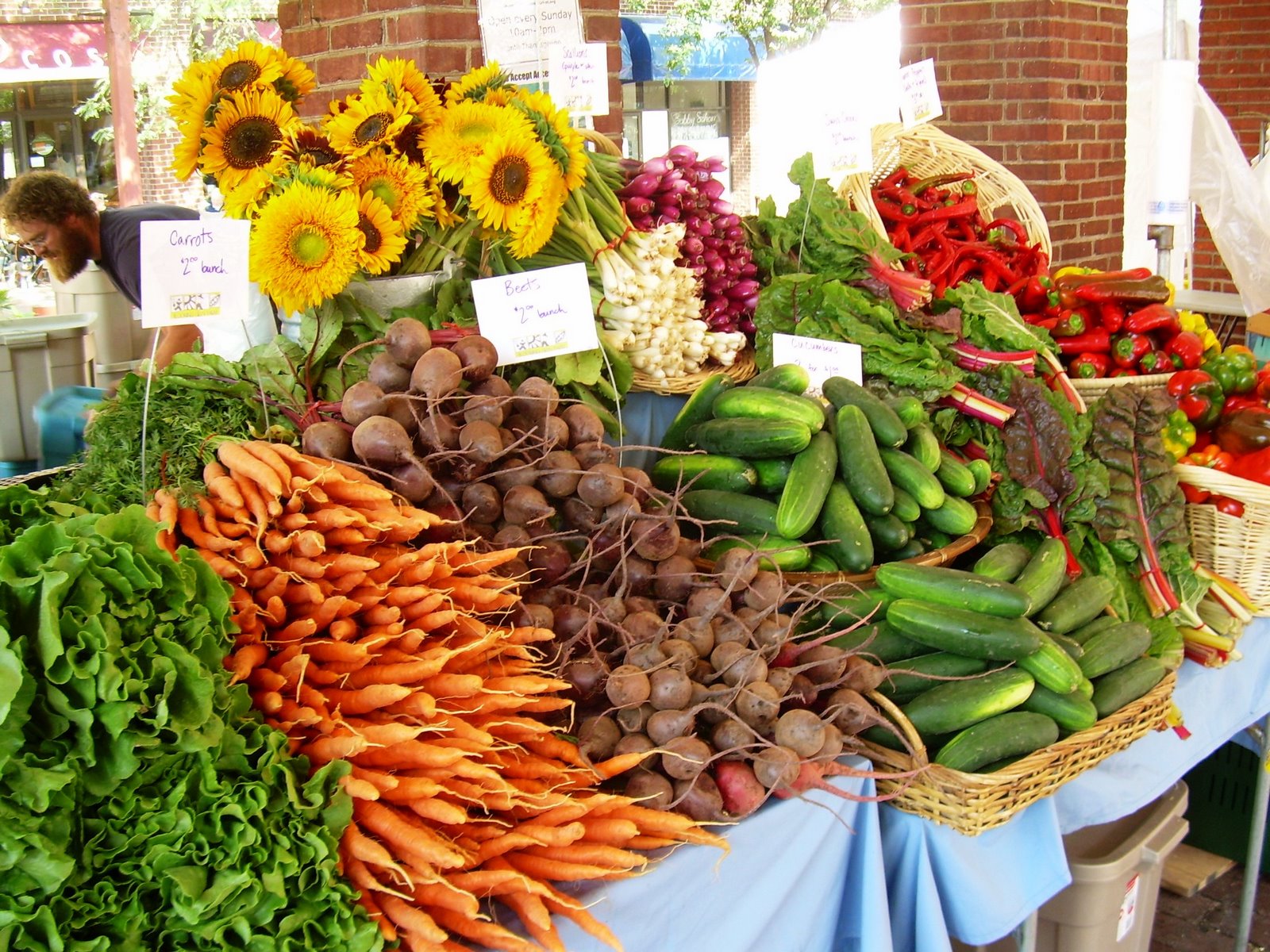Farmers Markets – Our region has a wide range of farmers markets and direct sales outlets such as farm stores and stands. Nationally farmers markets have grown from only 1,755 in 1994 to 8,268 in 2014 up from 3,706 ten years earlier. However growth has been showing signs of slowing down as it was only 1.5% in 2014 as opposed to 17% in 2011 and 10% in 2012. We have to remember that in 2012 we spent $700 billion on groceries and only around $7 billion on locally sourced food.
For farmers it takes precious time to travel to markets, set up and then spend x hours selling to customers. Customers gain by being able to talk to the producers but farm work is sacrificed and profits may be slim when all costs are taken in to consideration. By contrast direct sales through food hubs and to schools have been exploding. Food hubs are local groups that connect farmers to businesses using food and they have grown 288% and farm to school programs have increased 430%, according to the USDA.
Clearly there is plenty of room for both but the fact is that the much greater interest in local food is attracting different means of reaching the customer. SNAP is now accepted at over 5,900 farmers markets and direct marketing farms.
Soybeans – Brazil has witnessed dramatic growth in their soybean acreage and their production is expected to be 97 million metric tonnes in 2015/2016 compared with only 37.6 mmt in 2000. This has involved planting on just over 20 million acres of new land, much in the Mato Grosso. Brazil is now vying with the US for being the largest exporter – this year at 46 million metric tons, slightly below the US at 48.7 mmt.
US acreage of soybeans at 84.6 million acres is a record and 1% higher than 2014 which created the last record. Pennsylvania joins KY, MN, NY, SD and WI at planting the largest acreages of soybeans on record. PA also has the prospect of further increases when the Perdue plant is finally completed. Plans for the new storage and processing plant at Conoy Township in Lancaster County are still being reviewed by DEP but there are still hopes that construction of the plant might be completed in time to process the 2016 season crop.
Jobs for ag graduates – Once again we are reminded that there are plenty of jobs for ag graduates. Secretary Vilsack announced a new report showing tremendous demand for recent college graduates with a degree in agricultural programs with an estimated 57,900 high-skilled job openings annually in the food, agriculture, renewable natural resources and environmental fields in the US. There is an average of 35,400 graduates with a bachelor’s degree or higher in agriculture related fields, 22,500 short of the jobs annually. “There is incredible opportunity for highly-skilled jobs in agriculture” Vilsack stated “Those receiving degrees in agricultural field can expect to have ample career opportunities. Not only will those who study agriculture be likely to get well-paying jobs upon graduation, they will also have the satisfaction of working in a field which addresses some of the world’s most pressing challenges.” USDA press release. “There’s a whole high tech side of ag that’s really booming” Brian Bohr, Dean of Agriculture, University of Minnesota “It’s everything from robotics and sensors in harvesting equipment or livestock production systems, or even managing soil and drainage issues, all the way over to the genetics and genomics side of the world.”
Jobs were in demand in plant breeding and genetics but “Now the companies are stepping up and saying where in the world are all the agronomists? And where are all the applied cropping systems people? It’s a wide array of opportunities” “Don Wyse, Dept. of Agronomy. Larry Meadows, Land O’Lakes senior communications manager said one problem for agribusiness is that many people, including students, don’t realize the complexity and sophisticated knowledge needed to grow crops, process and transport food, and compete globally.” Article in Star Tribune.
People and sustainability – Our whole program this year at Philadelphia Society for Promoting Agriculture has been devoted to sustainability. Sadly the one meeting that had to be cancelled in March due to snow was Dr. Gary Moore, one of the leading figures in ag education in the country. I am sure he would have provided chapter and verse about the vital role our educational establishments are playing to ensure that ag graduates are being prepared to meet the challenges of the next 30-40 years. They will be the key to ensure that our agriculture is both productive and sustainable – the inseparable twins. There is absolutely no doubt that there are not only plenty of jobs for ag graduates but they will be paid at levels equivalent to other business and maths and science graduates. We need to attract the brightest, most enterprising and hard-working students.
GMOs finally add value to output traits. Input traits benefiting farmers have been the main thrust of seed companies. At last two high oleic soybean products genetically engineered to produce oil with no trans-fats, lower linoleic levels and produce higher levels of oleic acid are close to being more widely commercialized if EU registrations become reality. They do not need hydrogenation so soybean oil may regain market share.
Duncan Allison

